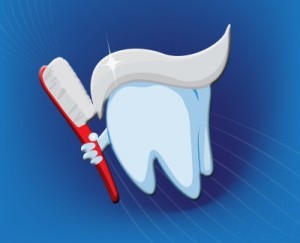 Temperomandibular Joint Disorder
Temperomandibular Joint Disorder
The temperomandibular joint (TMJ), the most complicated joint in the body, connects the mandible (lower jaw) to the temporal bone of the skull. It acts as a hinge that opens and closes the mouth for talking, chewing, kissing, swallowing, smiling and laughing. The joint can be felt by putting your fingers just in front of your ears and opening your mouth. There are two temperomandibular joints, one on each side of the face.
Temperomandibular joint dysfunction is a collective term for a complicated and poorly understood set of conditions characterized by pain and limitations of movement in the TM joints. The term TMJ disorders also encompasses problems with the jaw muscles.
Causes of temperomandibular joint dysfunction
Although the cause of any particular TMJ disorder is not always clear, the following factors have been implicated:
- Injuries to the jaw
- Dental procedures
- Stretching of the jaw caused by insertion of a breathing tube before surgery
- Arthritis
- Autoimmune disorders
- Infection
- Teeth grinding
- Stress
Symptoms of TMJ disorder
TMJ disorder may present as problems with jaw function in the presence or absence of pain. Pain may be felt in the jaw muscles or ear as well as in the neck and shoulders. Opening and closing the mouth may result in painful clicking, grating or popping. There may be stiffness, limited movement or locking of the jaw. The bite may feel awkward. Chronic headache may also be a symptom.
Prognosis for temperomandibular joint dysfunction
Occasional problems with the jaw are quite normal and not always a cause for concern. Symptoms often disappear without any special TMJ disorder treatment and TMJ surgery is rarely necessary. Often, simple home remedies prove to be sufficient TMJ disorder treatments:
- Application of cold packs or moist heat
- Eat soft foods like mashed potatoes, yogurt, scrambled eggs, etc.
- If over-the-counter pain relievers don’t help, your dentist may be able to prescribe something stronger
- Minimize jaw movement – avoid yelling, singing, chewing and yawning
- Keep your teeth slightly apart
- Learn relaxation techniques
Temperomandibular joint dysfunction treatments
Sometimes corrective dental TMJ disorder treatments like braces, bridges, crowns or replacing missing teeth can help. Low level laser therapy may reduce pain and inflammation as well as increasing function and range of motion. Your dentist may recommend using a plastic mouthpiece to prevent grinding or clenching. If not caught and treated early, TMJ surgery may be the only option. TMJ surgery may play a role in addressing the things like facial deformities, bite problems or ankylosis that may result from rheumatoid arthritis. Many insurance companies, however, do not cover TMJ surgery.
Prevention of temperomandibular joint dysfunction
The best way to avoid the need for TMJ surgery is to prevent the condition from becoming a problem in the first place.
- Avoid eating hard foods and chewing gum
- Maintain good posture, especially if you work in front of a computer screen all day. Get up and walk around
- Learn relaxation techniques to prevent tension in the neck and shoulder muscles












Comments are closed.